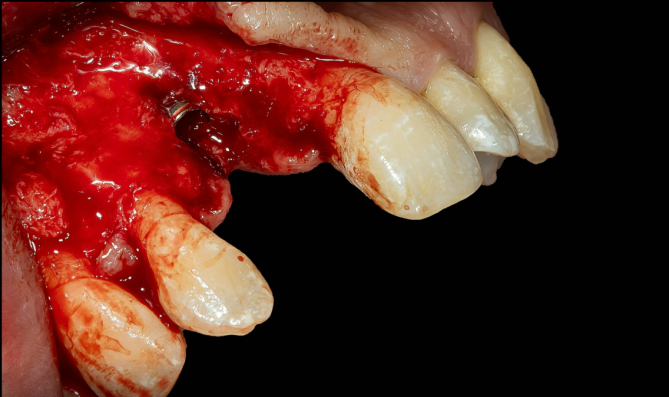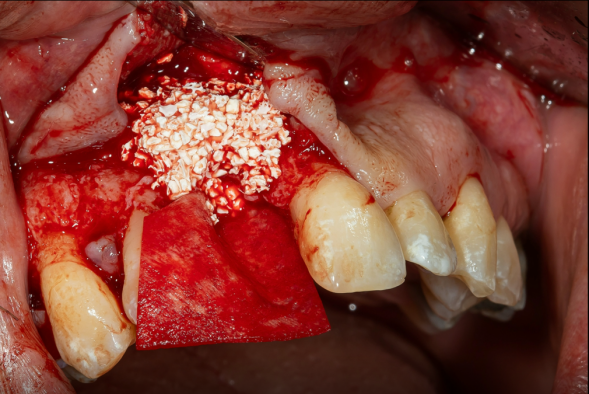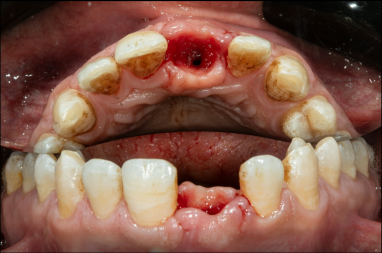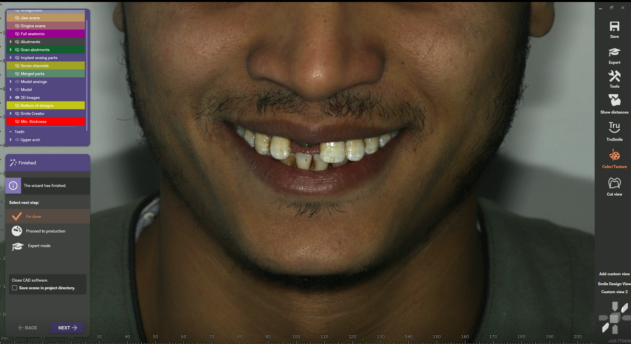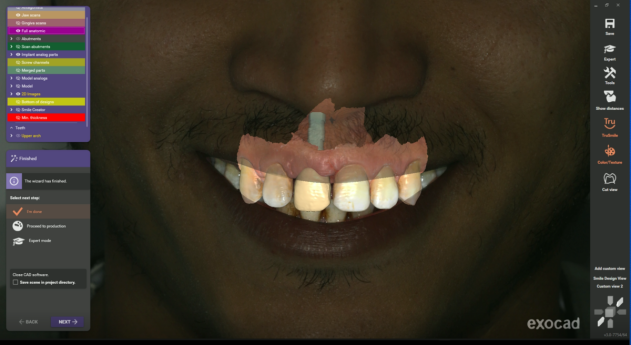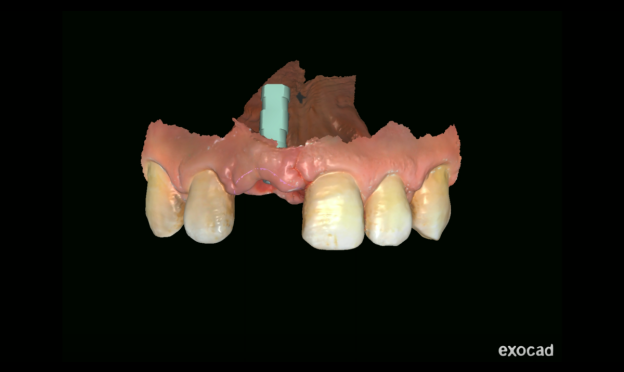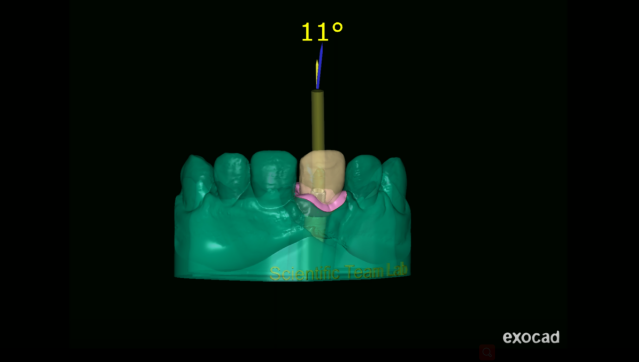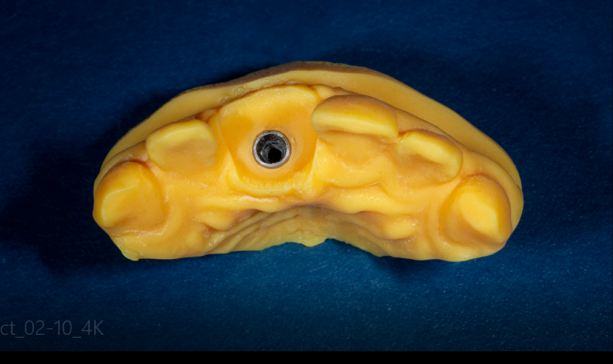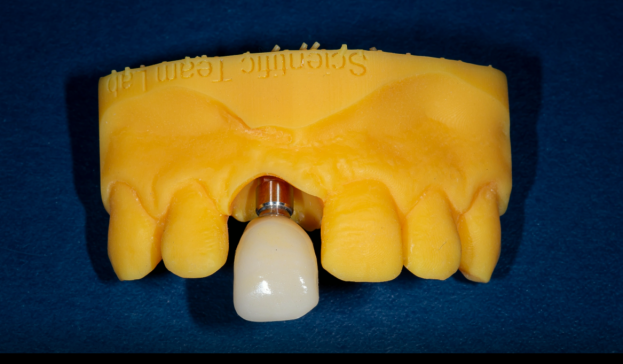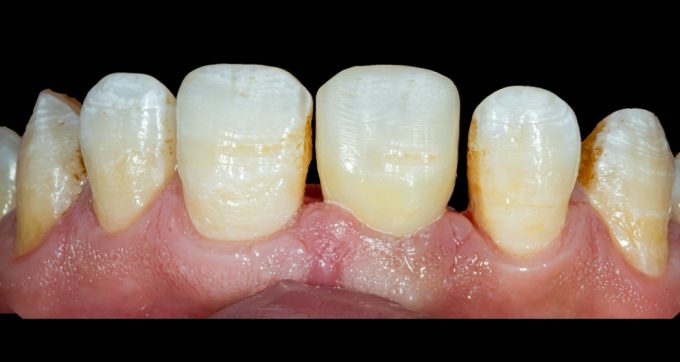Table of Contents
This case study explores the use of SHINING 3D solutions for digital implant aesthetic restoration of anterior teeth.
Introduction
As societal standards for quality of life have risen, so have expectations for oral aesthetics. The ability to afford comprehensive oral care has encouraged a growing desire among individuals to visually enhance their smiles.
At the same time, digital implantation technology has reached a state of maturity and predictability. Dentists and patients alike are all benefiting from the advancement of digital implant technology:
- from pre-implantation image analysis and virtual implant planning,
- from surgical guide design and manufacture,
- and from post-implant restoration aesthetic design and model editing.
And the criteria for successful implantation are two-fold.
Firstly, the functional aspect: ensuring successful osseointegration and stable implant function. Secondly, the long-term and stable aesthetic outcome. It’s not just about functionality; it’s about looking good as well.
In this case, we will see how digital tools can help dental professionals efficiently achieve successful implantations.
Case study
This is a patient with a defect in the upper anterior tooth region. Trauma led to the loss of tooth #11, causing bone resorption and resulting in insufficient labial bone and gingival recession.
In this implant area, it’s crucial to reduce trauma, quickly repair the area, and conduct soft and hard tissue augmentation. These steps preserve optimal width and thickness of the gingiva around the implant, ensuring a stable and aesthetically pleasing outcome.
The implant position and depth will affect the fullness and aesthetics of the soft tissue around the implant, which in turn affects the aesthetic restoration effect. Therefore, it is necessary to control the distance between the implant and the natural root surface as well as with other implants, and the thickness of labiomaxillary bone plate.
Both the intraoral data from the Aoralscan 3 intraoral scanner and the CBCT data can be combined and used in exoplan implant planning software. This allows the dentist to precisely locate the implant position while considering the patient’s bone volume, bone quality, jaw, teeth, and arch data.
All of this information will then be used to make a surgical guide, which can be directly 3D printed from the program.
Implant surgery with a 3D printed surgical guide
Using a surgical guide will avoid greater trauma to the patient.
We can 3D print the surgical guide with the AccuFab-D1s 3D printer from SHINING 3D. Thanks to the printer’s high precision, the surgical guide sleeve is in a good position without deformation or other abnormalities during the try-in.
The implantation is completed under the precise guidance of the surgical guide. The position, depth and direction of the implant are fixed, which is more precise and can help reduce errors of manual operation.
Due to the resorption of the labial alveolar bone which resulted in gingival recession, the insufficient peri-implant bone volume will influence the stability of the implant and the post-implant aesthetic effect. Therefore, the patient needs bone augmentation surgery to thicken the labial bone plate.
After the second-stage operation, the soft and hard tissues around the implant were plump. The color and texture of the gingiva were normal, and the emergence profile margin was formed.
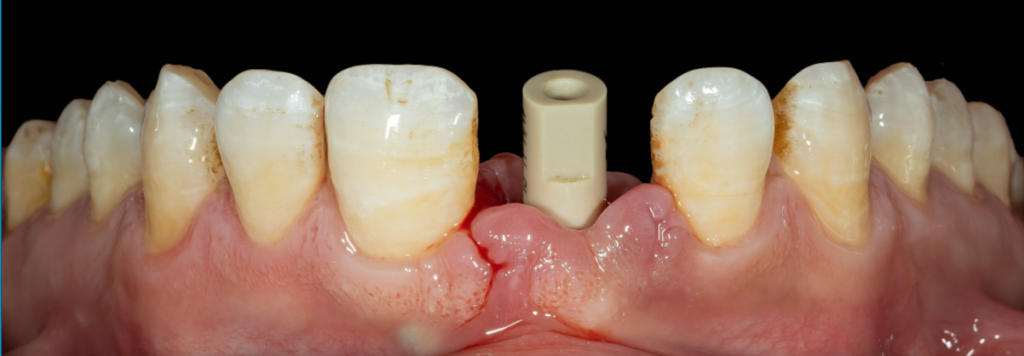
After this step, we can insert the scan body and collect intraoral data with the Aoralscan 3. This avoids the tediousness and impreciseness of physical impression-taking. The digital data collection process can be quickly and comfortably completed for subsequent design.
We can then finish the restoration design in exocad.
Finish model editing, and use the printer AccuFab-D1s to finish model printing. Then install the anolog and try it on.
The final implant placement and restoration effect. In conclusion, SHINING 3D’s full digital solutions enable easy and precise and digital implant aesthetic restoration of anterior teeth.
 ENG
ENG




















